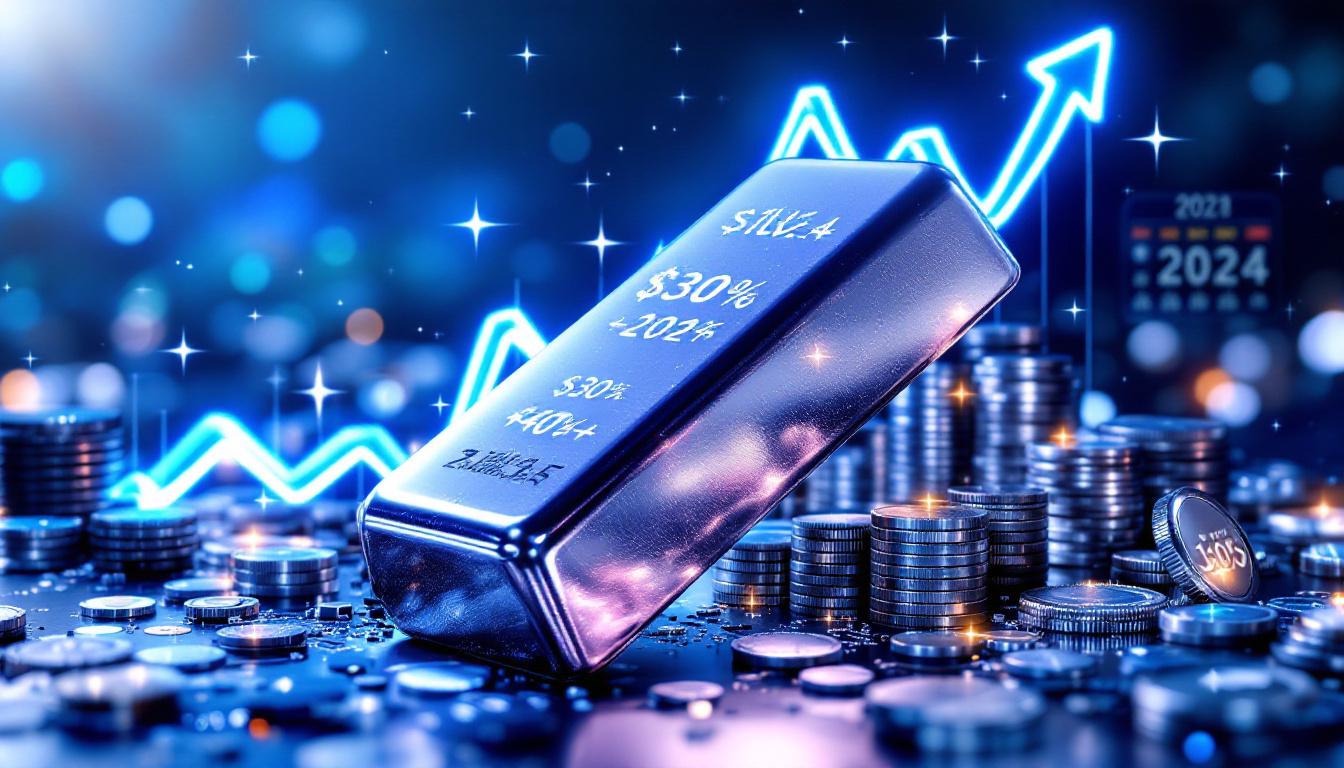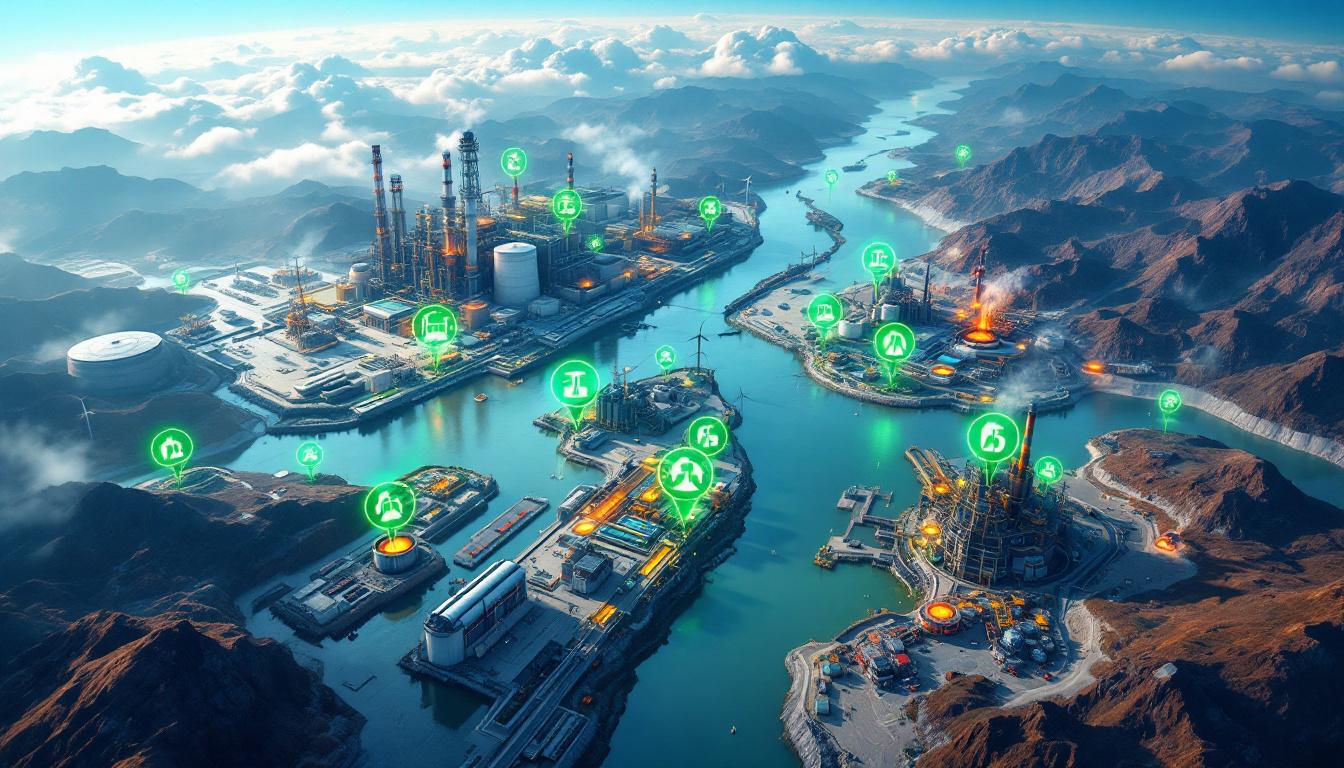Chile's Lithium Reserves: 28% Higher Than Earlier Estimates
Chile's lithium resources have undergone a significant upward revision, with new studies revealing a 28% increase from previous estimates. This development, centered on the Salares Altoandinos project in northern Antacama, positions Chile to reinforce its global dominance in lithium production. The project's combined resources of 3.05 million tonnes (mt) of lithium—comprising a 150% surge at Salar La Isla and a 40% rise at Salar Aguilar—mark a pivotal shift in the country's mineral strategy. Spearheaded by Chile's national mining company ENAMI, this discovery aligns with broader efforts to diversify lithium extraction beyond the Salar de Atacama while fostering international partnerships. The findings, validated by third-party consultancies Amphos 21 and Montgomery & Associates, underscore Chile's capacity to meet escalating global demand for lithium market trends and lithium-driven technologies.
What Are Chile's Updated Lithium Resources?
Chile's lithium reserves have been recalibrated to reflect a 28% increase, elevating the nation's total resources to approximately 14.05 million tonnes when combined with existing deposits in the Salar de Atacama. This revision stems from extensive exploration campaigns at the Salares Altoandinos project, a greenfield initiative encompassing the La Isla and Aguilar salt flats in the Antofagasta region.
Revised Resource Estimates and Methodologies
The Salar La Isla now holds 2.13 million tonnes of lithium, a 150% increase from prior estimates, while Salar Aguilar's resources rose by 40% to 920,000 tonnes. These figures were derived through advanced geostatistical modeling and brine sampling conducted by Amphos 21, a consultancy specializing in hydrogeological assessments. Montgomery & Associates, a U.S.-based firm, independently verified the data, ensuring compliance with international reporting standards such as the JORC Code. The combined 3.05 million tonnes from these two sites alone exceed the annual lithium production of Australia, the world's current top producer.
Chile's previous resource estimate of 11 million tonnes, as reported by the U.S. Geological Survey (USGS), primarily accounted for the Salar de Atacama, which contributes over 30% of global lithium supply. The updated figures not only expand Chile's resource base but also introduce new geographies into the production landscape, reducing reliance on a single basin.
How Does This Discovery Impact Chile's Global Lithium Position?
The revised reserves solidify Chile's position as the second-largest lithium holder globally, trailing only Bolivia's untapped resources. However, Chile's advantage lies in its proven extraction capabilities and established infrastructure, which Bolivia lacks. This discovery enhances Chile's bargaining power in international markets, particularly as demand for electric vehicle (EV) batteries surges.
Strategic Advantages and Market Dynamics
The 28% resource increase provides Chile with leverage to negotiate favorable terms in public-private partnerships (PPPs). For instance, ENAMI's forthcoming joint venture for the Salares Altoandinos project is expected to attract high-value investments from Asian and European conglomerates. Additionally, diversifying lithium sources mitigates geopolitical risks associated with over-concentration in the Salar de Atacama, which has faced environmental and community pushback.
Globally, this discovery could temper lithium prices by alleviating supply constraints. Benchmark Mineral Intelligence reports that lithium demand will outstrip supply by 2030, but Chile's expanded reserves may narrow this gap. Furthermore, the integration of Salares Altoandinos into Chile's production portfolio positions the country to challenge Australia's lithium ambitions in spodumene-derived lithium, offering brine-based alternatives that are cost-competitive.
Who Is Developing the Salares Altoandinos Project?
ENAMI, Chile's state-owned mining enterprise, is leading the Salares Altoandinos initiative under a public-private partnership model. The project exemplifies Chile's strategy to retain state control over strategic resources while leveraging foreign expertise and capital.
Partnership Structure and Indigenous Engagement
ENAMI is finalizing plans to select an international partner through a competitive bidding process. The Special Operation Agreement (Contrato Especial de Operación), currently under review by Chile's Comptroller General, outlines profit-sharing mechanisms and environmental safeguards. Notably, the project has already completed consultations with local Indigenous communities, a prerequisite under Chile's constitutional framework for resource extraction. These consultations, conducted under ILO Convention 169, ensure that development aligns with the cultural and ecological priorities of the Atacameño people.
The inclusion of Salar Grande—a smaller basin adjacent to La Isla and Aguilar—adds exploration upside, though initial focus remains on the higher-confidence reserves. ENAMI's executive vice-president, Iván Mlynarz, emphasized the project's transformative potential: "Salares Altoandinos transitions Chile from potential to certified resources, validated by third-party rigor".
Which International Companies Are Interested in the Project?
Over a dozen multinational firms have expressed interest in partnering with ENAMI, reflecting the project's strategic value. Participants span lithium consumers, miners, and financiers, underscoring the sector's vertical integration trends.
Key Players and Investment Profiles
BYD Chile (China) is an EV manufacturer seeking to secure raw materials for its global battery production network. BYD's participation aligns with its vertical integration strategy, mirroring investments in Argentina's lithium triangle.
Eramet Chile (France) specializes in critical metals and brings expertise in brine processing technologies, notably its Direct Lithium Extraction (DLE) pilot in Argentina.
Posco Holdings (South Korea) aims to bolster its cathode material supply chain, having recently acquired lithium assets in Argentina and Australia.
Rio Tinto (UK/Australia), the mining giant, signals a strategic pivot toward battery minerals with its involvement, complementing its Rincon lithium investment in Argentina.
Financiers such as CNGR Advanced Material and LG Energy Solution are evaluating debt and equity stakes, with LG prioritizing long-term offtake agreements to feed its U.S. and Polish gigafactories.
What Makes This Discovery Significant for Chile's Mining Sector?
The Salares Altoandinos project epitomizes Chile's shift from a lithium monoculture toward a diversified, technology-driven mining economy. By certifying previously speculative resources, Chile enhances its appeal to high-value investors while addressing systemic challenges.
Technological and Economic Implications
The project's resource validation process utilized cutting-edge techniques such as seismic tomography and brine geochemistry analysis, reducing exploration risk for future ventures. Economically, the government estimates that Salares Altoandinos could generate $2 billion annually in export revenue by 2030, bolstering fiscal stability.
Furthermore, the project aligns with Corfo's initiative to extract cobalt and rare earth elements from mining waste, creating synergies between lithium and adjacent critical mineral sectors. This circular economy approach minimizes environmental footprint while maximizing resource yield—a model gaining traction in global mining circles.
How Will This Impact the Global Lithium Supply Chain?
Chile's expanded reserves introduce new dynamics into the lithium market, affecting pricing, trade patterns, and geopolitical alliances.
Supply Stabilization and Regional Diversification
The additional 3.05 million tonnes of lithium could extend global supply by approximately 18 months at current consumption rates, according to CRU Group projections. This influx may moderate the price volatility witnessed in 2022–2024, when lithium carbonate prices fluctuated from $70,000 to $18,000 per tonne.
Regionally, the discovery strengthens South America's "lithium triangle" (Chile, Argentina, Bolivia), which collectively holds 58% of global reserves. However, Chile's regulatory clarity and infrastructure edge position it to capture a disproportionate share of new investments compared to its neighbors.
For downstream industries, particularly EV manufacturers, Chile's output expansion ensures a steadier feedstock for lithium-ion batteries. Tesla, for instance, sources 40% of its lithium from Chilean brines, a figure likely to grow with Salares Altoandinos.
What Is Chile's Overall Lithium Strategy?
Chile's lithium policy balances state stewardship with market pragmatism, prioritizing sustainable extraction and value-added processing.
Pillars of National Lithium Development
Public-Private Partnerships ensure ENAMI's role as a non-operating partner with state oversight while attracting foreign capital. Profit-sharing models, such as royalty agreements tied to lithium prices, maximize national returns.
Community and Environmental Safeguards include mandatory Indigenous consultations and adherence to the OECD Due Diligence Guidance to mitigate social risks. Projects must also submit water management plans to prevent over-extraction from arid basins.
Vertical Integration is a key goal as Chile aims to move beyond raw lithium exports by fostering domestic cathode and battery manufacturing. The National Lithium Commission's 2024 roadmap allocates $500 million for pilot processing plants.
This strategy contrasts with Bolivia's state-centric model and Argentina's laissez-faire approach, positioning Chile as a middle path that combines market efficiency with social accountability.
FAQs About Chile's Lithium Resources
How do Chile's lithium resources compare to other countries?
Chile now holds an estimated 14.05 million tonnes of lithium, second only to Bolivia's 21 million tonnes. However, Chile's operational expertise and infrastructure make it the de facto leader in production.
What extraction methods will be used at Salares Altoandinos?
While specifics remain undisclosed, ENAMI favors solar evaporation for its cost efficiency. Pilot testing of DLE technologies is underway to reduce water usage and accelerate extraction cycles.
When might production begin at these new sites?
Pre-feasibility studies are slated for completion in late 2025, with commercial production expected by 2028. Timelines hinge on partner selection and environmental approvals.
How will local communities be affected by these developments?
ENAMI's Indigenous consultation framework guarantees revenue sharing and employment quotas for local communities. Impact assessments predict the creation of 1,200 direct jobs during construction.
What environmental considerations are being addressed?
Projects must comply with Chile's updated Environmental Impact Assessment (EIA) regulations, which mandate brine reinjection and monitoring of freshwater aquifers. Additionally, companies exploring revolutionizing lithium production methods are focusing on reducing water consumption, which remains a critical concern according to Reuters reports.
For investors navigating lithium volatility, Chile's lithium reserves are 28% higher than earlier estimates, providing a more stable outlook for long-term supply security in the face of growing demand for battery materials worldwide.
Want to Discover the Next Major Lithium Opportunity?
Ride the wave of lithium exploration with real-time alerts on significant ASX mineral discoveries, powered by Discovery Alert's proprietary Discovery IQ model that instantly identifies potential investment opportunities before the broader market reacts. Visit Discovery Alert's discoveries page to understand how major mineral findings like Chile's lithium reserve upgrade can translate into substantial returns for early investors.




